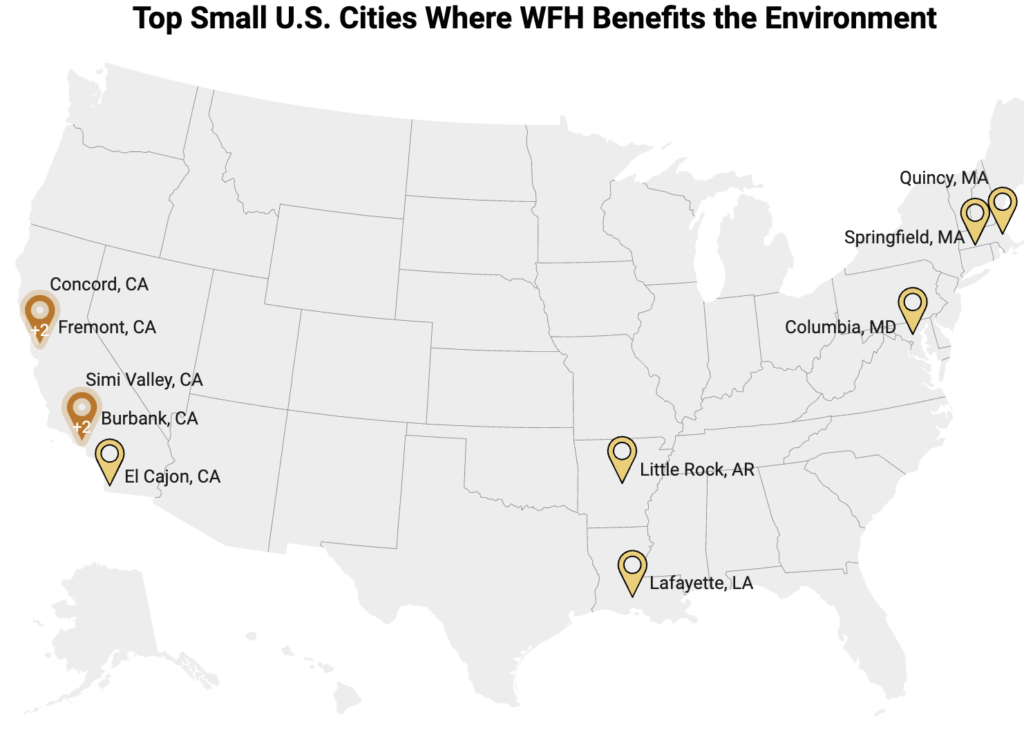- Contract Management: How to Take Care of Your Active Contracts - November 1, 2023
- Gen Z Is Leading the Way for Workplace Equality - May 22, 2023
- What is Job Description Benchmarking? - April 25, 2023

The future of remote jobs is here, growing faster than ever. As more companies realize the benefits of remote work, we’re seeing increasing demand for workers who operate remotely.
All of this has changed due to the recent pandemic. When the workforce suddenly seemed to shift overnight, many companies had to create new policies that allowed employees to work from home.
Over the last few years, employees have found remote work more enjoyable than being in the office. But, they didn’t expect their remote positions to last — as many companies notified their workers that they would return to the office.
Fast forward to today, remote work is the new norm. Now, you may be wondering what the future holds for remote jobs and how your company can thrive in attracting remote employees. Below, we’ll explore everything you need to know.
The Benefits of a Future of Remote Jobs
According to research, 25% of jobs in the US will be remote, and it’s clear why they are becoming increasingly popular.
For one, remote employees are more productive than their in-office colleagues. That’s because office workers are more distracted by office politics and have limited focus compared to someone who works from home.
Also, remote jobs offer more flexibility and freedom. You can work from anywhere, meaning you save time and money from commuting, and finding childcare options is no longer a hassle.
Plus, remote jobs offer better work-life balance, improving quality of life.
The Future of Remote Jobs
In the last few years, remote jobs have become a common way for companies to attract workers. While the trend is likely to continue, you should consider some important factors as you plan for the future.
The first thing to understand is that remote jobs will lead to more competition. Due to millennials being the largest workforce and demanding remote work, you need to be ready to adapt your hiring strategies. You’ll also need to offer attractive salaries and benefits packages.
Another important factor is culture. As more companies offer remote work options, candidates will be more selective about which company they choose. While you still need to compete on pay, you’ll also need to incorporate culture and benefits, which could lead to higher retention rates.
And, you can look forward to happier employees who love their jobs more than ever! By offering remote work opportunities, you will increase job satisfaction among employees who want more flexibility in their schedule — allowing them more time for family or other activities outside of work hours.
Future of Remote Jobs: How To Attract Remote Workers
You can attract remote workers by following the tips below:
1. Write a Clear Job Description
Job descriptions are an essential part of attracting remote talent. A job description should include all the information a potential employee needs to decide whether or not they align with the role. Here are some tips on how to write a job description to appeal to remote workers:
- Write in a friendly tone.
- State the requirements clearly and succinctly.
- Include a list of skills required for the position.
- Make sure to advertise the job as remote-friendly.
To make the writing process easier, plenty of tools are available online for you to use. Consider using job description management software to automate the formatting process and write more effectively.
2. Build a Remote-Friendly Work Culture
Your onboarding process is one of the most important aspects of building a remote-friendly culture. Ensure you give your new hires the tools they need to succeed in their roles and understand how the company operates.
Remote employees often need help feeling like they need to learn more or grow fast enough. In fact, 77% of employees leave a company because of slow career progression. Typically, this is because they have fewer opportunities for mentorship than their office-based counterparts. So, you must encourage them to take on new projects and offer advice when needed.
You’ll also need to facilitate connections between team members by prioritizing “facetime.” You might not be able to get everyone into the same room at once. Still, you can ensure everyone is digitally connected by using video conferencing software like Zoom, Google Hangouts, or a Virtual Office space.
This allows teams to stay in touch and collaborate even when separated by distance or time zones.
3. Highlight the Benefits of Your Remote Workplace
Remote workers don’t often get the extra incentives like in-office employees, like ping pong tables and cafes. That’s why it’s crucial to highlight the benefits of your remote workplace — it’s important to make a case for why people should want to work from home for your company.
Get creative with remote employee benefits by offering vacation packages, technology allowance, and learning and development opportunities. If you provide something unique that no one else does, you can entice top talent.
4. Build a Digital Presence
Creating a solid digital presence and branding yourself as a remote-friendly workplace is essential.
For many job seekers, their first introduction to your company will be through your website and social media. Ensure these are up to date and reflect your organization’s values. Consider creating a “Work With Us” page on your site, so it’s easily accessible to potential candidates who want to learn more about your company.
Also, ask employees to use social media platforms like Twitter, Instagram, and Facebook to share what it’s like to work at your company. This can include stories about how they got their job, their favorite part of it, or even pictures from inside the office space. Employees actively engaged on these platforms can help interested candidates feel welcome in your workplace culture, before applying!
Environmental Benefits of our Future of Remote Jobs: A Look at Real-Life Impact
As remote work continues to reshape the modern workplace, its environmental advantages are becoming increasingly clear. Cities across the U.S. are reaping the benefits of reduced commuting and more energy-efficient lifestyles, showcasing how work-from-home (WFH) trends can positively affect the planet. So, here’s a closer look at how WFH adoption is driving green transformations:
Big Cities Lead the Charge

Baltimore, MD, stands out as a sustainability leader among larger cities, slashing its carbon footprint by an impressive 27% since 2019. This shift is closely tied to a 200% increase in WFH adoption and a noticeable 4% drop in electricity usage per customer. Similarly, Washington, D.C., has seen significant gains, with a nearly 280% jump in remote work reducing the city’s carbon footprint by over 23%. These improvements demonstrate how remote work, combined with renewable energy initiatives, can create greener urban environments.
Mid-Sized Cities Make Their Mark

In cities like St. Paul, MN, and Newark, NJ, the environmental impact of remote work is just as remarkable. St. Paul achieved a 12% reduction in its carbon footprint, while Newark boosted its air quality by 6% and reduced commuting times by the same margin. So, these mid-sized cities show that WFH isn’t just a convenience. It’s also a catalyst for cleaner air and more sustainable energy use.
Smaller Cities Show Big Gains

Small cities like Quincy, MA, and Simi Valley, CA, are also embracing the remote work revolution. Quincy saw a staggering 420% increase in WFH adoption, leading to a 7% drop in commute times and a decrease in electricity usage. Meanwhile, Simi Valley recorded the highest reduction in commute times among small cities—an impressive 8%. These changes highlight the potential for even smaller communities to also achieve significant environmental wins through remote work.
The Bigger Picture: Green Choices for a Sustainable Future of Remote Jobs
The rise of hybrid work models—now embraced by over 22 million Americans—is a step toward a more sustainable future. Therefore, by working remotely just two to four days per week, employees and employers alike contribute to lowering emissions. Thus, reducing energy use, and improving air quality. So, the ripple effects of these green practices can guide cities, businesses, and individuals toward more eco-friendly lifestyles.
As companies continue to explore flexible work arrangements and a future of remote jobs, the environmental benefits are an essential part of the conversation. Therefore, by prioritizing remote work, organizations not only support their employees’ work-life balance. They also help shape a cleaner, greener world
Be Prepared for Remote Jobs
We are living in an age where work is changing. Expect more opportunities to work remotely as technology advances and demands increase.
You must prepare for how this change will affect your company as an employer. If you want to attract and retain top talent, you must learn how to embrace the future of remote jobs — which means learning how to make your workplace remote-friendly.
This starts by writing great job descriptions. If you’d like to learn how Ongig’s Text Analyzer software can help, please request a demo.
Shout-Outs:
- Average Graphic Designer’s Salary and Tips to Increase Your Pay (by Eleanor Hecks)
- 5 Expert Hiring Tips When Scaling Your Company (by G-P)
- The future of remote work, according to 6 experts (by Rani Molla)
- The Green Side of WFH: Top U.S. Cities Where Remote Work Positively Influences the Environment (by Maria Zidaru)
This is a guest post from Eleanor Hecks. Eleanor is the managing editor of Designerly. She’s also a mobile app designer with a focus on user interface. She lives in Philadelphia with her husband and Goldendoodles, Bear, and Lucy. Connect with her about marketing, design, and/or tea on LinkedIn.

